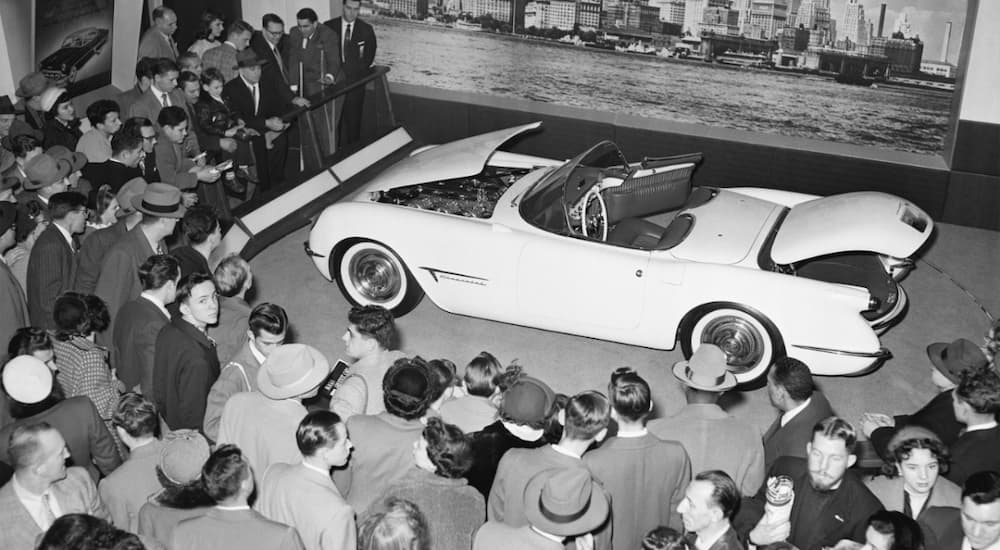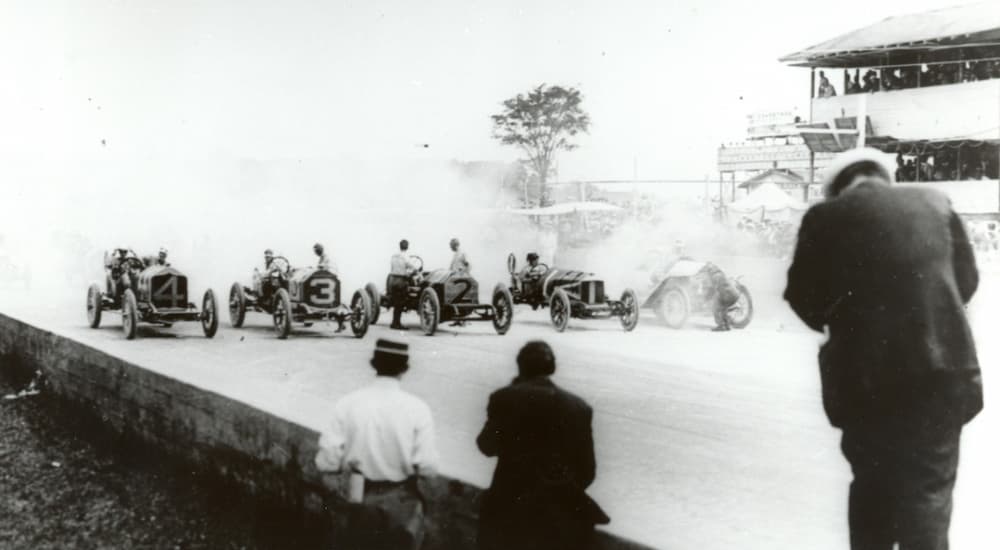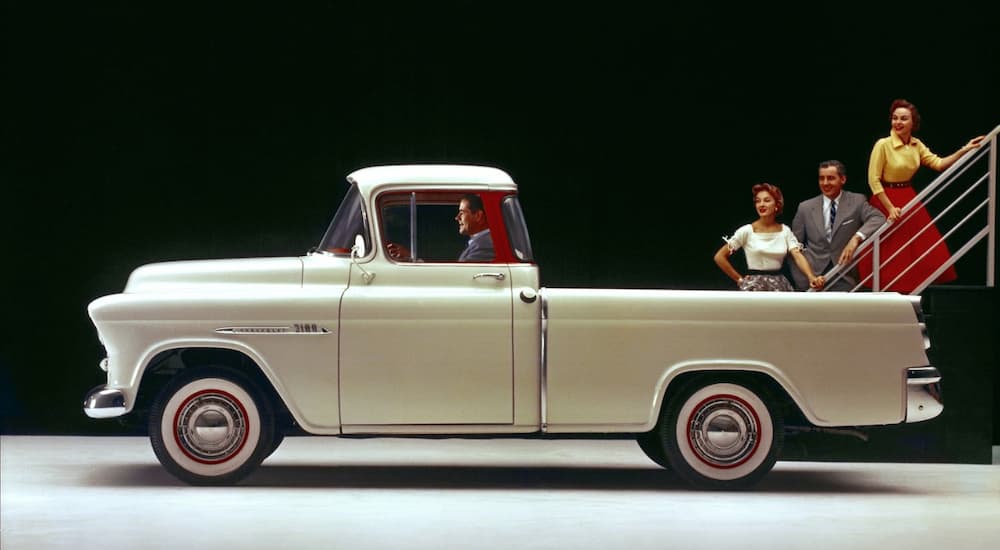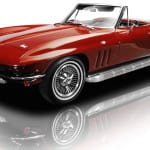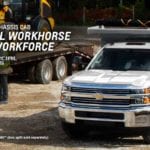2021 marks Chevrolet’s 110th birthday. This calls for celebration. The company has had quite a history, which can be marked by some of the finest vehicles on the road. To mark this special occasion, I’d like to take a look back at the very earliest days of Chevy and at some of its most notable first vehicles. These are not cars you’ll be able to find at a used Chevy dealer, as these are cars that simply belong to yesteryear (or yestercentury at this point), and any models left of them survive in museums or pristine garages. Chevy has always been a leader in the automotive industry, and we don’t want the vehicles of old to be forgotten. So, with this in mind, let’s take a stroll through Chevy’s early history by way of some of its very first vehicles.
The Beginning
You’re probably expecting me to say that it all began in 1911. Well, that’s not quite true. It all began in 1908 when Billy Durant, an auto marketer, started General Motors. A young, 30-year-old Louis Chevrolet – who was a renowned and very skilled racer, as well as a mechanic – was hired by Durant to do promotional drives for the new company due to his reputation of tearing up the racetrack.
Early in General Motors’ life, Durant ended up parting ways with the company, but he continued to pursue a career in the auto industry. After developing a new car with the help of Chevrolet, Durant decided to name the vehicle after him, believing it would sell better with the name of a famous racer attached to it. Right he was because Chevy’s very first vehicle, the Series C Classic Six, became quickly regarded, and so Chevrolet was born.
The 1911 vehicle was, as you may have surmised, home to a six-cylinder engine. Made of cast iron, this 4.8-liter engine allowed the vehicle to reach 40 horsepower and a maximum of 65 miles per hour and was one of the biggest engines at the time. Because of the engine size, it performed very highly for its day and could hold its own among its competitors. 5,987 Series C Classic Sixes were produced between 1913 and 1914 before it was replaced. The vehicle sold for $2,150. This was a high price for the time; very high, actually. Oh, if only those were the prices of today. Speaking of today, only two Series C Classic Six cars survive, and one of them is housed at the GM Museum in Detroit. So, maybe it’s time to plan a trip to Detroit.
In addition to the Series C, Durant began producing a smaller, cheaper vehicle originally called the Little. Both vehicles were quite popular but were discontinued after 1913. In 1914, the Little was remodeled as the Chevrolet Model L, and the Model H also made its debut. These vehicles featured a new four-cylinder engine, making them more durable than their predecessors. They were also more affordable, making them more easily accessible to buyers. So, the two new models were a quick success. Due to the success, Durant was able to buy his way back into General Motors in 1916, putting him back at the head of the company by 1917. Durant had come full-circle.
The Big Merge
In 1918, then, Chevrolet and General Motors finally merged since Durant was at the helm of both. That same year, Chevrolet released the One-Ton, which was Chevy’s very first purpose-built truck. The One-Ton came in a variety of forms, as it could be purchased either as a cowl and chassis or an express body with the option of an eight-post curtain top. The large wooden platform on the back of the truck served as a platform on which people could build. It housed a 3.6-liter OHV 4-cylinder engine which gave it the potential for up to 36 horsepower. Not the company’s highest performing vehicle yet, but it was a more affordable option for customers coming in at only $1,325 for the Chassis model and $1,460 for the Express model. Bear in mind, though, that the average household income at the time was $1,518 per year. But, hey, gas was only a quarter per gallon.
In 1929, Chevrolet moved things a step up by way of the International Series AC Light Delivery. This was the first truck in the automotive industry to host an OHV 6-cylinder engine. What’s more, this vehicle said farewell to wooden wheels and featured, instead, all-new steel disc wheels. This little guy was only 117” long, but it could reach a horsepower of 46 – Chevy’s highest yet. With 125 pounds-feet of torque, this vehicle performed at a higher level than anything else Chevy had seen to date. The best part about it–get ready–is that it had an MSRP of $400 for the Chassis and $595 for its Sedan delivery option. Can you imagine?
The Series AC took on the classic look of the time, appearing as a sturdy and charming wagon. Its cargo bed provided a variety of loading and dumping options, so drivers certainly must have been pleased with the development, especially at such an affordable price.
Moving Forward
Durant ultimately left General Motors in 1920 and passed away in 1947, a few years after Louis Chevrolet passed away in 1941. The same year as Durant passed away; however, Chevy released its 3100 Series trucks. Having just come out of the horror that was World War II, these were the first trucks to use Chevy’s postwar Advance Design, which styled the vehicles with 5-bar horizontal grilles and a rounded profile, making them fit for a new, postwar age.
Thanks to its new exterior style, the Series 3100 trucks offered a larger cab, making for a three-person seating bench. What’s more, the vehicle offered a fresh-air heater/defroster. The cherry on top: an in-dash radio. These were the longest Chevy trucks to date, with a total length of 190.375” and a bed of 78.” It took performance to a new level with its 3.5-Liter I-6 engine, making it capable of 78 horsepower and 170 pounds-feet of torque. It was not even Chevy’s most expensive truck to date, coming in at an MSRP of $1,087. Seeing as the average household income at the time was $2,850, this was a steal.
Over the coming decades, in the absence of both of its founders, Chevrolet would continue to refine its vehicles, making them fit for a new era. In 1953, the Chevy Corvette was introduced. Little did Chevy know that this would continue to be one of the most renowned sports cars to this very day. Only 300 Corvettes were produced, with the original bodies being made out of fiberglass. Just two years later, in 1955, the company introduced the small-block V-8 engine, making affordability and performance go hand-in-hand. Chevy had made a name for itself and continued to grow in production and popularity.
Over a Century of Progress
Over the next century, in the absence of both of its founders, Chevrolet would continue to refine its vehicles, making them fit for a new era, becoming one of the most renowned brands in automotive history. What’s more, they would redefine the automotive industry by producing the first mass-produced electric vehicle with an extended range in the 2011 Chevrolet Volt. Though this model is now discontinued, it has led to Chevy’s lineup of electric vehicles, most notable among them, the Chevrolet Bolt. Chevy continues to be a leader in automotive technology with such new models as the 2022 Chevrolet Corvette Stingray and the all-new ZR2. Chevy’s history is far from over, but it certainly gives one a deeper appreciation of the present to look back on where the company has been. So, with that, let us wish Chevy a very happy 110th birthday.
